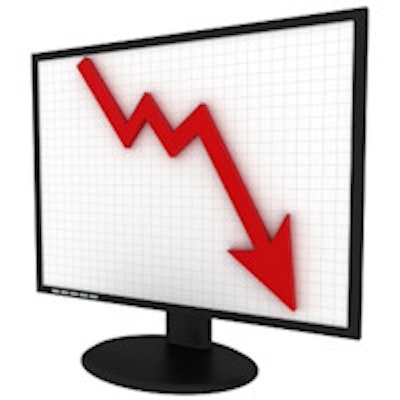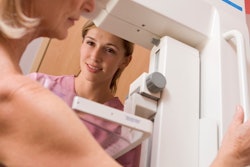
Digital breast tomosynthesis (DBT) cuts the number of recalls in a subset of women vulnerable to higher recall rates: those who have never had a prior mammogram, according to a new study in the November issue of the American Journal of Roentgenology.
Baseline mammography studies tend to have significantly higher recall rates than those with available comparisons, so using DBT in this population could be a way to maximize the technology's benefits, researchers from the University of Pennsylvania wrote. In fact, matching DBT's strengths to specific patient populations is a crucial "best practice" skill in an environment of decreasing reimbursement and limited resources for implementing new technologies (AJR, November 2015, Vol. 205:5, pp. 1143-1148).
 Dr. Emily Conant from the University of Pennsylvania.
Dr. Emily Conant from the University of Pennsylvania."DBT equipment is expensive, and if a facility only has one unit, it can be difficult to decide how best to use it," corresponding author Dr. Emily Conant told AuntMinnie.com. "We're suggesting that if DBT resources are limited, women who have never had a mammogram or who do not have prior studies available would be a good subgroup to target."
Your basic baseline?
Conant and colleagues analyzed recall rate, cancer detection rate, and positive predictive value for more than 10,000 women who underwent digital mammography, comparing this group with more than 15,500 women who underwent DBT screening. Of the digital mammography exams, 11.2% were baseline studies, and of the DBT exams, 11.9% were baseline studies.
Compared with digital mammography, DBT reduced the recall rate for the baseline subgroup by 22%, or 45 fewer patients recalled per 1,000 cases. As for cancer detection, DBT found 40% more cancers than digital mammography; for the PPV1 value (number of cancers per number of recalls), DBT had an 85% higher rate than mammography.
| Digital mammo vs. DBT for baseline mammography | |||
| Exam | Recall rate | Cancer detection rate per 1,000 | PPV1 |
| Digital mammography | 20.5% | 4.2 | 2 |
| DBT | 16% | 5.9 | 3.7 |
Regarding specific populations of women within the baseline subgroups, Conant and colleagues determined the following:
- For women younger than 50, the recall rate was 21.2% for digital mammography versus 16.1% for DBT, a 24.1% reduction.
- For women 50 and older, the recall rate was 19.5% for digital mammography versus 16% for DBT, a reduction of 17.9% (not statistically significant).
- Among women with nondense breasts, the recall rate for digital mammography was 20.3%, compared with 15.4% for DBT, a reduction of 24.1%.
- For women with dense breasts, the recall rate for digital mammography was 20.9%, compared with 17.3% for DBT, a reduction of 17.2% (not statistically significant).
Better, but still high
Though DBT appears to decrease recall rates, its rate in women undergoing baseline breast cancer screening is still higher than the rates for women who have prior mammograms, Conant said. Case in point? Recall rates for patients with prior exams were 9.1% for digital mammography and 7.8% with DBT -- less than half the rates for those getting baseline exams.
"Among women getting baseline exams, tomosynthesis is associated with even better outcomes, even though recall rates are still high," she told AuntMinnie.com. "This is just a tricky set of patients."
In any case, using DBT with women who present for their first mammogram -- or who do not have access to priors -- seems to be a good way to make use of the technology in a tight budget environment, according to Conant and colleagues.
"If there are limited available resources, patients younger than 50 years who are undergoing baseline screening or who have no prior mammographic images available may benefit more than other women from screening with digital breast tomosynthesis," they concluded.



















